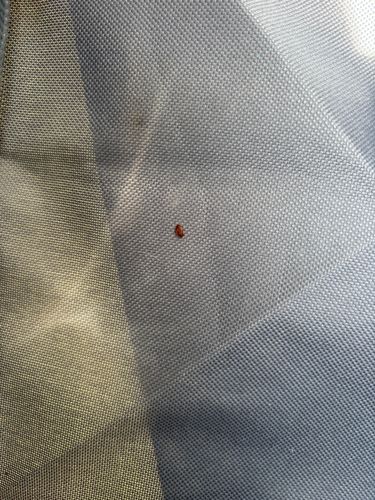Bed Bug
Scientific Name: Cimex lectularius
Order & Family: Hemiptera, Cimicidae
Size: Adults are typically 4-5 mm (3/16 - 1/4 inch) long, about the size of an apple seed. Nymphs are smaller and translucent.

Natural Habitat
Primarily indoor environments, often infesting beds, seams of mattresses, bed frames, headboards, and cracks in walls and furniture. They hide in dark, secluded places close to their hosts.
Diet & Feeding
Exclusively blood of warm-blooded animals, primarily humans. They feed by piercing the skin and injecting an anticoagulant and anesthetic, making the bite often unnoticed.
Behavior Patterns
Nocturnal, hiding during the day in cracks and crevices. They are attracted to warmth and carbon dioxide. Females lay 1-5 eggs per day, adhering them to surfaces. Nymphs hatch in 6-17 days and mature in about 21 days after 5 molts, each requiring a blood meal. An adult can live for 6-12 months.
Risks & Benefits
Risks: Bed bugs do not transmit diseases, but their bites can cause itchy welts, skin irritation, and secondary infections from scratching. Heavy infestations can lead to anxiety, sleep deprivation, and psychological distress. They are a significant nuisance pest. Benefits: No known direct benefits to humans or the ecosystem; they are considered a pest.
Identified on: 8/18/2025